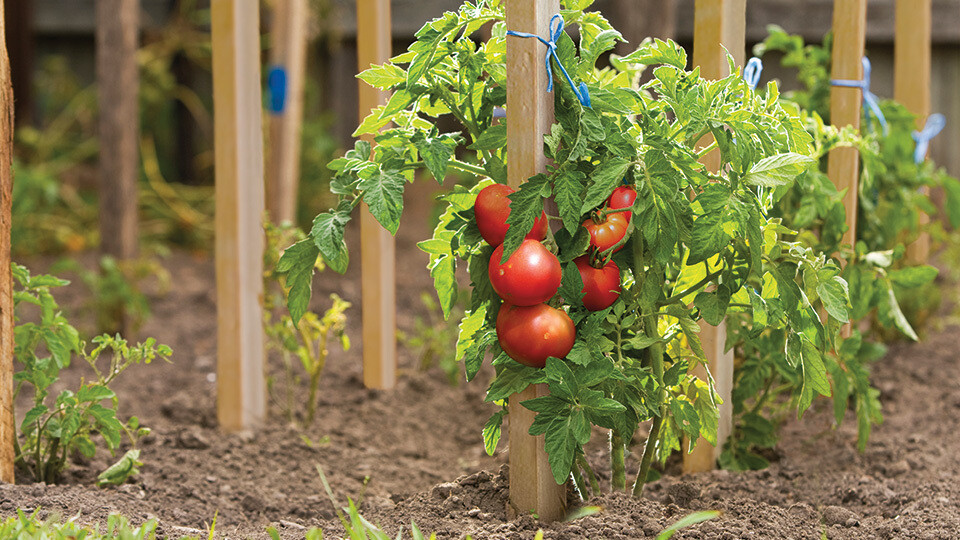Here are Some More Tomato Growing Tips
Published 3:00 pm Friday, April 11, 2025
|
Getting your Trinity Audio player ready...
|
Let’s Get Growing with Dr. Mary Helen Ferguson
Tomato plants need to be supported in some way. Stakes, cages, and a string-and-weave system are all options. Support structures for indeterminate (vining) varieties need to be taller (6 feet or more) than those for determinate (bush-type) varieties.
Suckers – shoots that grow between the leaves and the main stem of a tomato plant – are removed from the bases of tomato plants so that fruits will be larger and harvest will begin earlier.
Trending
On determinate varieties, only remove suckers under the one immediately below the first flower cluster. In other words, one sucker should be left below the first flower cluster. On indeterminate varieties, remove suckers below the second flower cluster.
Suckers should be removed when they’re about 2 inches long. If you accidentally let one get longer than 4 inches, just leave it. Removing them at that point may do more harm than good.
A problem people commonly experience in tomato gardens is blossom end rot. This is associated with low calcium in the fruit. However, having blossom end rot doesn’t necessarily mean that the calcium level in the soil is low. If soil is limed appropriately to adjust soil pH, soil calcium is typically sufficient.
Blossom end rot can occur because the water supply is irregular. Calcium moves upward with water in the plant, and if soil is allowed to dry excessively, sufficient calcium won’t be able to reach the fruit. On the other hand, if soil is too wet, roots won’t function well, and plants may not take up enough calcium.
Try to keep soil moisture consistent, rather than letting it get too dry or stay too wet. Mulching can help conserve water so that soil doesn’t dry out as quickly and the amount of water available to the plant doesn’t vary as much over time.
Excessive fertilizer can also contribute to blossom end rot, so avoid overfertilizing. Nitrogen in the ammonium form can compete with calcium for uptake by roots, so nitrate-based nitrogen sources like calcium nitrate are recommended for side-dressing tomatoes.
Trending
To reduce problems with leaf diseases like early blight and bacterial spot, avoid watering from overhead in the late afternoon or evening. If you water in a way that gets leaves wet – such as with a sprinkler or by spraying water from a hose – do this in the early morning.
Other ways to minimize leaf disease problems include not working in the garden when leaves are wet; rotating where in the garden you plant tomatoes; removing old plants at the end of the season; and doing a good job of managing weeds in the garden.
Fungicides labeled for use on tomatoes and containing chlorothalonil can be used to reduce spread of fungal leaf diseases. Copper-containing fungicides protect plants from leaf diseases caused by bacteria as well as some fungi.
Hornworms can eat a great deal of leaf tissue quickly and sometimes go unnoticed until they’ve done so, since they blend in with the plant. They can be removed by hand if observed. Because they glow under the light of an ultraviolet flashlight (blacklight), this can be used in the evening to help find them.
The tomato fruitworm (same as corn earworm) is often problematic. It may go unnoticed until it has already entered and damaged fruit. Where fruitworms have been a problem, an appropriate insecticide can be applied beginning when plants first start to set fruit. Spinosad-containing insecticides are effective on fruitworms and hornworms.
Insecticides with Bacillus thuringiensis subsp. kurstaki (Btk) or pyrethroid chemicals (active ingredients with names ending in “thrin,” such as permethrin, and esfenvalerate) may work, too, but there is resistance to these in some tomato hornworm populations. Pyrethroid insecticides are effective against stink bugs and leaffooted bugs, as well, but they are also quite hazardous to bees and other beneficial insects.
If you apply an insecticide, wait until late afternoon or early evening, when bees are no longer active. Make sure any pesticide (insecticide, fungicide, or other) you use is labeled for use on tomatoes, and read and follow label directions.
Let me know if you have questions.
Dr. Mary Helen Ferguson is an Extension Agent with the LSU AgCenter, with horticulture responsibilities in Washington and Tangipahoa Parishes. Contact Mary Helen at mhferguson@agcenter.lsu.edu or 985-277-1850 (Hammond) or 985-839-7855 (Franklinton).






